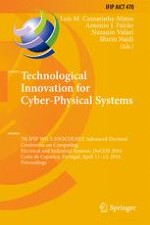2016 | Buch | 1. Auflage
Technological Innovation for Cyber-Physical Systems
7th IFIP WG 5.5/SOCOLNET Advanced Doctoral Conference on Computing, Electrical and Industrial Systems, DoCEIS 2016, Costa de Caparica, Portugal, April 11–13, 2016, Proceedings
herausgegeben von: Luis M. Camarinha-Matos, António J. Falcão, Nazanin Vafaei, Shirin Najdi
Verlag: Springer International Publishing
Buchreihe : IFIP Advances in Information and Communication Technology
